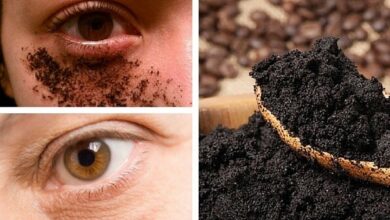Jasmine Care: [Soil, Humidity, Pruning and Problems]
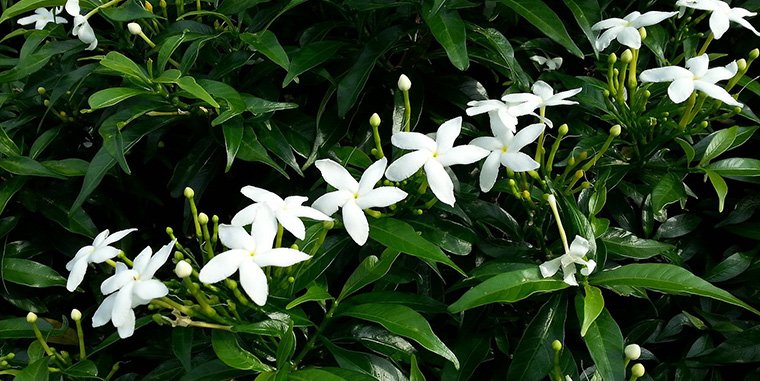
What characteristics does jasmine have?
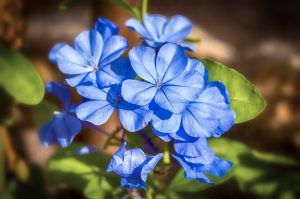 Jasmine is an ornamental plant of great elegance and beauty that can have around 200 species, known as Jasminum.
Jasmine is an ornamental plant of great elegance and beauty that can have around 200 species, known as Jasminum.
They can be presented as a bush or in a climbing version with spectacular flowers that give off a special perfume that permeates the entire environment.
Moreover, there is a very popular version, the Jasminum Polyanthum that activates its aromatic power only at night.
What soil needs does jasmine have?
Substratum
An important piece of information to achieve a healthy crop of jasmine is to maintain a constant humidity of the soil or substrate, which should never be waterlogged or bogged down. In a pot, the key to a good substrate is summarized as follows:
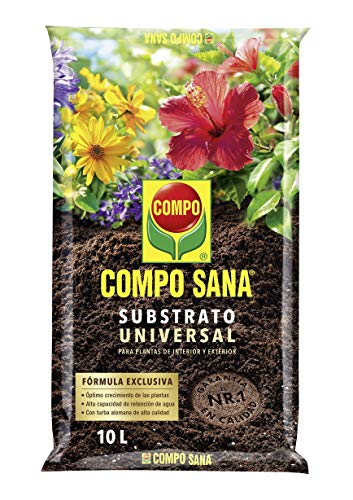
It must have a good dose of nutrients, preferably of organic origin, which also has very good drainage, which is permeable, which filters the water it receives daily very well, because the water supply is very important for all species of jasmine.
Preparing a good base of gravel and pebbles, for example, which can be placed in the bottom of the pot, will go a long way in preventing the holes in the pot from clogging up and preventing the constant flow of water.

The equation is completed with a light substrate with good drainage, based on peat, a part of coconut fiber and earthworm humus, an excellent combination that provides great benefits.
Pass
Also, good quality manure or fertilizer should be applied in the hottest season of the year. An extraordinary contribution can help make it even stronger. Applying monthly doses is not bad.
A homemade fertilizer prepared with the peel or skin of the banana is very good, or vegetable ashes, a rich source of potassium.

Experts recommend the application of special fertilizers, such as NPK-12, made up of calcium, magnesium and essential micronutrients. And also add potassium, since Jasmine consumes a lot of this vital nutrient during its flowering.
Nitrogen must also be high to compensate for the Jasmine’s energy consumption during the flowering season. And phosphorus helps to strengthen and proliferate healthy roots.
How to make jasmine grow strong and vigorous?

There are several stellar tips for keeping jasmine healthy, whether outdoors or in a pot, where the challenge for beginning gardeners is much greater, but not impossible.
The first thing is to choose a section of the garden of the house, if we will have it in a pot, where there is a good amount of sunlight daily.
With about 4 hours of sun exposure per day you will have strong and vigorous jasmine.
Because it should be clear that to achieve a long and healthy survival, Jasmine needs direct sun, although it can also tolerate semi-shaded areas.
As it grows in a pot, it is good to place stakes or stakes on it, to facilitate the ability of this plant to climb or scale walls, if we want it to expand a lot.
The stake should be placed at a short distance, a few centimeters from the base, so as to wrap around the bush. The same applies if they live in a section of the garden. A well-lit space is best.
Terraces and balconies are very good for growing this generous ornamental species, which also needs a place with good air circulation so that the humidity is balanced. This will allow the flowering to be spectacular, with a lot of fragrance. In your home there is surely a good window or a balcony. Those places are ideal.
The same happens in the garden, it is necessary to have a very permeable soil, which does not become stagnant because this can put the plant in serious problems, which does not tolerate drowning but always needs water, so humidity must be guaranteed with constant irrigations that maintain always moist substrate.
But the site must be wide, because we must remember that it is a vine plant that can reach several meters in height.
What humidity does jasmine need?
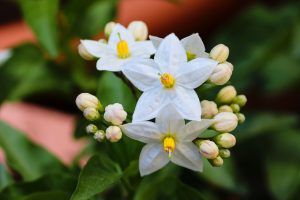 Another vital data corresponds to the temperature. To stimulate its flowering, it is convenient to place it in winter somewhere outside the house when the temperature drops below 10ºC, as long as it remains in a pot.
Another vital data corresponds to the temperature. To stimulate its flowering, it is convenient to place it in winter somewhere outside the house when the temperature drops below 10ºC, as long as it remains in a pot.
But just a little bit more. In the cold months it is worth clarifying that if the plant spends a lot of time exposed to temperatures below 10ºC, it will not produce flowers in the next warm season.
Why is this happening? Simple, the plant will not have managed to remain in its period of vegetative rest. That is why you have to put it outside the house for a while, without it being a victim of winter frosts. When spring arrives, the plant can return to the house but in a place with good constant sunlight.
Irrigation should be done as follows:
- So that the humidity is adequate in spring and summer, it is necessary to water every 2 or 3 days, but in moderation, without excesses.
- The best water is rainwater, or soft water with little lime.
- In winter, the plant should only be watered when the soil is completely dry. That prevents the roots from rotting. And it can happen easily, so you have to be careful.
- Neither the flowers nor the leaves should ever receive water, especially if the plant lives outdoors, because they can easily burn after receiving strong sunlight.
Is it necessary to prune jasmine?
When you have jasmine in a pot, it is advisable to prune it very carefully at the end of winter, so that it becomes stronger when the growing season arrives. It is very important to previously disinfect the pruning shears, before removing the dry stems and leaves with good skill.
This will allow it not to grow too much, it will keep it there in good shape, because pruning will control the growth if the branches are cut intelligently.
How often should we prune jasmine?
Whenever the branches grow disorderly, crooked, they should be removed so that they do not disturb a balanced growth of the potted plant.
This also applies when you have a jasmine crop in the garden, but we do not want it to behave like a climber. It must be pruned when the bush expands too much to prevent its branches from crossing each other too much.

Helping it climb with a certain order is equally recommended, but it is only appropriate in this case to remove dry and broken branches. If we want to have it as a bush, then the stems that are getting too long are cut, until it remains as a low bush.
When it is in full bloom, there is no point in pruning for anything in the world, because it would stop the production of its characteristic white flowers that are so fragrant.
How to avoid jasmine pests and diseases?
Although jasmines are very strong climbing ornamentals and great producers of flowers, they can sometimes suffer from some diseases caused by external agents.
Spider mites, for example, are faithful attackers of jasmine. Its presence is verified when the leaves turn pale, yellowish and when the underside of the leaf is inspected, sprawling cobwebs are seen.
This situation occurs when the environment is very dry, when it is very hot or because the plant has not been watered frequently enough. It is then necessary to apply a bath to the leaves with a solution of potassium soap or Neem oil also serves as a remedy.

Likewise, deformed stems, battered leaves or sickly, discolored flowers may appear. Most likely, the plant has been attacked by some kind of fungus, so it is recommended to apply a fungicide. If it does not recover then the plant must be eliminated so that it does not infect other neighbors.
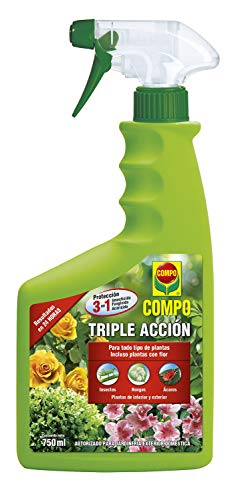
Other causes associated with yellowing and ugly leaves are also a direct consequence of excessive watering. Or due to lack of nutrients, especially when there is a lack of nitrogen, responsible for the beautiful greenery of jasmine.

Applying nutrients with a good fertilizer rich in organic matter, as well as controlling irrigation, which must be constant but never excessive, is the best way to restore lost health to this beautiful versatile plant, which can be grown in a pot, as a shrub in the garden. or as a climber.
Maybe you are also interested in:
- How often and how to water my Jasmines?
- Fertilize a Jasmine: How, When and How Much? – Sow100
- Jasmine Vine Care: [Soil, Humidity, Pruning and Problems]
- Common Jasmine Cuttings: [Grafts, Time, Rooting and Planting]
- Jasmine Cuttings in Water: [Grafts, Time, Rooting and Planting]
- Spanish Jasmine Cuttings: [Time, Eradication, Planting and Fertilizer]
- Prune a Jasmine: [Importance, Time, Tools, Considerations and Steps]

![Photo of Acerola: [Cultivation, Irrigation, Care, Pests and Diseases]](https://www.complete-gardening.com/wp-content/uploads/2022/08/acerola-cultivation-irrigation-care-pests-and-diseases-390x220.jpg)
![Photo of How to Get Rid of Grass: [8 Effective Methods]](https://www.complete-gardening.com/wp-content/uploads/2022/08/how-to-get-rid-of-grass-8-effective-methods-390x220.jpg)
